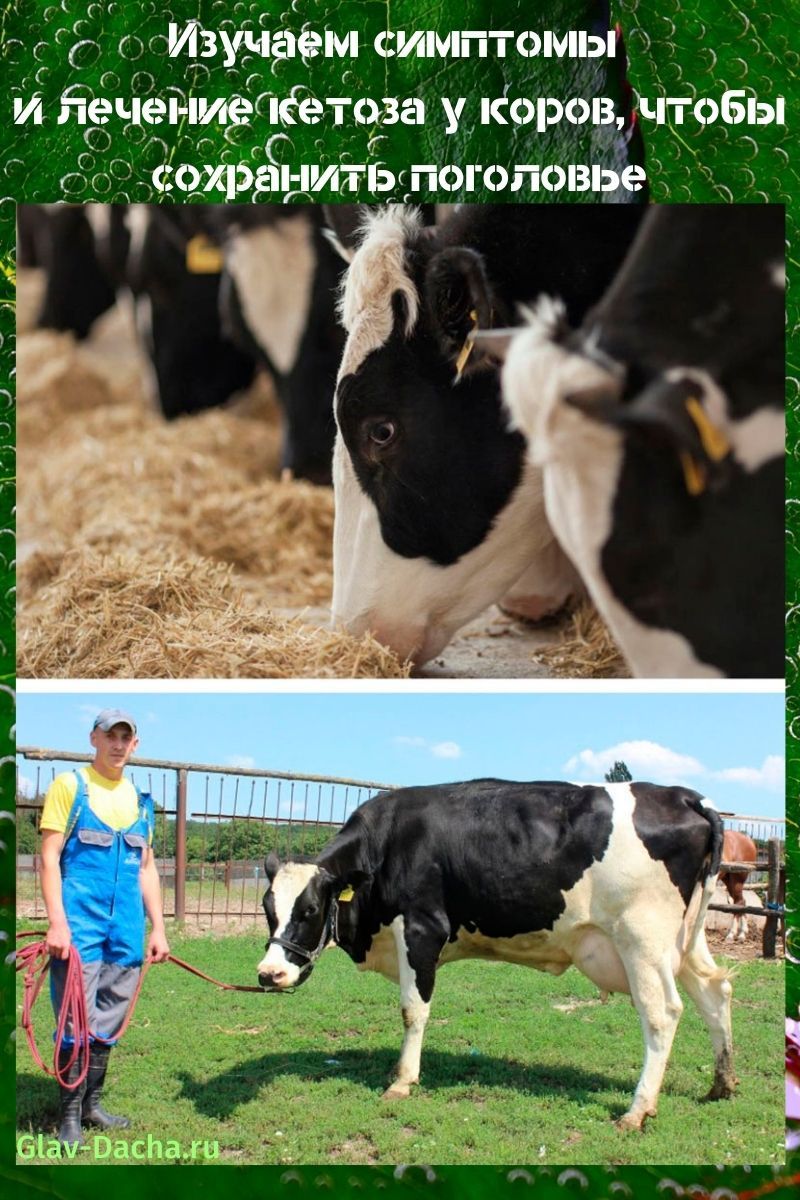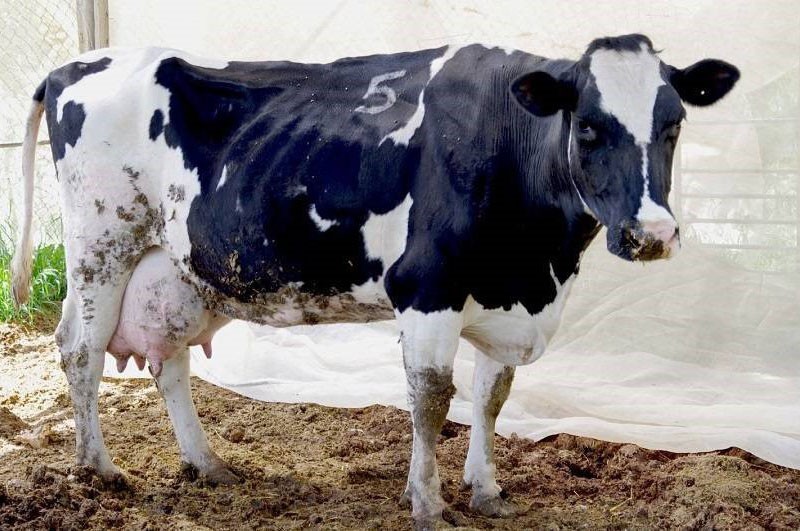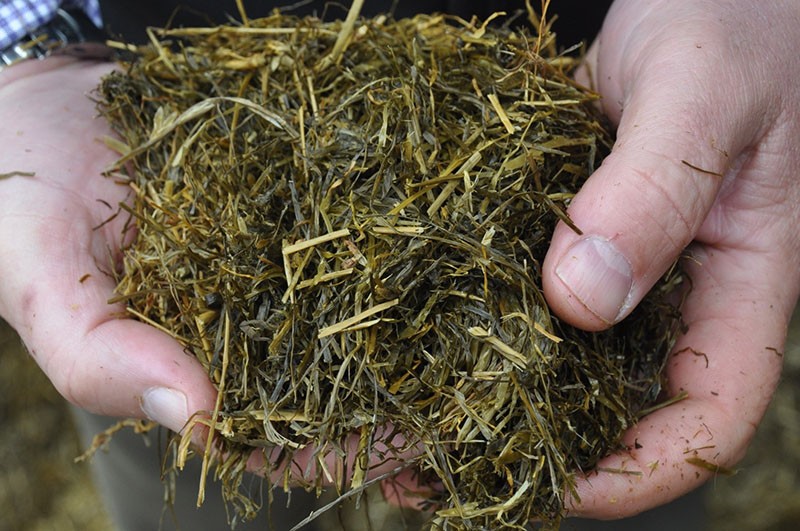Studying the Symptoms and Treatment of Ketosis in Cows to Conserve Herds
 Every farmer tries to breed healthy, highly productive animals. Therefore, it is important to know the symptoms and treatment of ketosis in cows at home. The disease is not contagious and may seem like a minor problem. However, it leads to low milk yield, poor milk taste and weight loss of the animal. Understanding the causes of the disease and its symptoms will help you choose the right treatments. And available preventive measures protect against additional problems and stress.
Every farmer tries to breed healthy, highly productive animals. Therefore, it is important to know the symptoms and treatment of ketosis in cows at home. The disease is not contagious and may seem like a minor problem. However, it leads to low milk yield, poor milk taste and weight loss of the animal. Understanding the causes of the disease and its symptoms will help you choose the right treatments. And available preventive measures protect against additional problems and stress.
What is the root of the problem

Pathology is caused by improper feeding, in which such nuances can be traced:
- lack of carbohydrates;
- an abundance of concentrates;
- excess protein components during the milk period;
- the presence of mold in root crops or hay.
 The disease is triggered by regular feeding of pulp and silage to livestock. These "foods" contain large amounts of acetic acid and butyric acid. Substances accumulate in the blood, which affects the quality of milk and the physical condition of livestock. Additional factors in the appearance of ketosis in cows are disorders of the internal organs.
The disease is triggered by regular feeding of pulp and silage to livestock. These "foods" contain large amounts of acetic acid and butyric acid. Substances accumulate in the blood, which affects the quality of milk and the physical condition of livestock. Additional factors in the appearance of ketosis in cows are disorders of the internal organs.
The risk group includes animals in which:
- pathology of the endocrine and genitourinary system;
- obesity;
- stress;
- lowering blood glucose levels.
Lack of walking and lack of ultraviolet radiation also leads to the disease. It can appear in cows 1-2 months after calving. Age is also an important factor. The disease is diagnosed in individuals over 4 years old.
In the warm season, animals do not get sick, since they have an abundance of various foods.
Symptoms and Treatment of Ketosis in Cows
 The main signs of the disease are of a different nature. They depend on the nature of the pathology, as well as the degree of neglect. After all, the disease gradually affects the internal organs of the animal, which leads to biochemical changes in the blood.
The main signs of the disease are of a different nature. They depend on the nature of the pathology, as well as the degree of neglect. After all, the disease gradually affects the internal organs of the animal, which leads to biochemical changes in the blood.
There are 4 forms of ketosis:
- gastroenteric;
- hepatotoxic;
- neurotic;
- subclinical.
 In gastroenteric pathology, there are a number of signs of ketosis in cows. The first step is a failure of digestion. A perverted appetite appears, chewing processes and belching are disrupted. As a result, animals suffer from frequent constipation, followed by acute diarrhea.
In gastroenteric pathology, there are a number of signs of ketosis in cows. The first step is a failure of digestion. A perverted appetite appears, chewing processes and belching are disrupted. As a result, animals suffer from frequent constipation, followed by acute diarrhea.
The hepatotoxic form is determined by the yellowness of the mucous membranes and lack of appetite. The cow is breathing heavily and irregularly. Clinical examination reveals heart failure and enlargement of internal organs (eg, liver).
Neurotic symptoms appear at an advanced stage of the disease. The animal is constantly agitated. There is a high sensitivity in the neck, ridge and chest area. Tremors and cramps occur in the muscles. The sick animal is grinding its teeth. Often is in a coma.
 It has been observed that subclinical ketosis in cows occurs during gestation and feeding of the calf. It causes a malfunction of carbohydrate, protein and fat metabolism in the body. These processes lead to the formation of ketone compounds. Therefore, the disease is diagnosed on the basis of laboratory tests.
It has been observed that subclinical ketosis in cows occurs during gestation and feeding of the calf. It causes a malfunction of carbohydrate, protein and fat metabolism in the body. These processes lead to the formation of ketone compounds. Therefore, the disease is diagnosed on the basis of laboratory tests.
The subacute form of the disease is characterized by such factors:
- apathy towards the outside world;
- dull appearance of the coat;
- tachycardia.
 In addition, the disease is determined by the smell of acetone in the cow, which it emits when breathing. With an advanced form, it occurs in milk and urine. The formation of ketone bodies in the animal's body also adversely affects the reproductive organs. As a result, weak calves.
In addition, the disease is determined by the smell of acetone in the cow, which it emits when breathing. With an advanced form, it occurs in milk and urine. The formation of ketone bodies in the animal's body also adversely affects the reproductive organs. As a result, weak calves.
Despite a number of visible symptoms, a veterinarian should be consulted to establish a correct diagnosis.
Treatment methods
 The troubleshooting scheme largely depends on external and internal changes. Complex therapy helps to achieve positive results. Typically, the symptoms of ketosis in cows are considered and the treatment that is appropriate for the particular case.
The troubleshooting scheme largely depends on external and internal changes. Complex therapy helps to achieve positive results. Typically, the symptoms of ketosis in cows are considered and the treatment that is appropriate for the particular case.
Diet
 The first step is to pay attention to the diet. It must contain a sufficient amount of protein components.
The first step is to pay attention to the diet. It must contain a sufficient amount of protein components.
It could be:
- quality hay;
- fresh grass;
- potatoes;
- carrot;
- beet;
- turnip.
Ready-made mixtures with vitamins and minerals play a special role. They are usually sold in specialized stores.
An important component for livestock is salt, which stimulates metabolism.
Medication
 The key aspect of animal recovery is the "start" of metabolic processes. Therefore, we will figure out how to treat ketosis in a cow, given the degree and form of the disease.
The key aspect of animal recovery is the "start" of metabolic processes. Therefore, we will figure out how to treat ketosis in a cow, given the degree and form of the disease.
There are a number of effective injections:
- insulin;
- ammonium lactate;
- glucose (40%);
- caffeine benzoate;
- sodium bicarbonate (3%);
- propylene glycol;
- hormonal drugs;
- vitamins.
Antiketo mixtures play a special role. The medicine is prepared from calcium chloride (9 g), glucose (100 g), soda (13 g), caffeine (0.5 g), calcium chloride (0.5 g) and any antibiotic of a penicillin nature (0.5 g). The components are diluted in 1 liter of distilled water.
Traditional methods
 At home, treating ketosis in cows is carried out in fairly simple ways. Insulin injections are replaced with a sweet drink. Add 400 g of granulated sugar to 10 liters of water and mix thoroughly.
At home, treating ketosis in cows is carried out in fairly simple ways. Insulin injections are replaced with a sweet drink. Add 400 g of granulated sugar to 10 liters of water and mix thoroughly.
Also include in the diet:
- sugar beet;
- crushed oats;
- molasses;
- fodder turnips.
If necessary, the sick cow is given a deep enema using baking soda. 150 g of soda is placed on 500 ml of water. Animals are soldered with the same mixture.
Traditional methods are suitable only for the treatment of subclinical ketosis.
Homeopathy
 To stimulate the liver, drugs are used containing extracts from medicinal herbs. The most popular is Karsulen. It is injected under the skin or intramuscularly. The dose is calculated according to the scheme: 1 ml of the drug is enough for 100 kg of animal body weight. The injections are given on the third, fifth and seventh days after the calf is born.
To stimulate the liver, drugs are used containing extracts from medicinal herbs. The most popular is Karsulen. It is injected under the skin or intramuscularly. The dose is calculated according to the scheme: 1 ml of the drug is enough for 100 kg of animal body weight. The injections are given on the third, fifth and seventh days after the calf is born.
Udder quartz and massage
 General immunity is strengthened by a simple physiotherapy procedure. It is carried out using a quartz lamp no more than 1 time per 2 days. The duration of the process is within 10 minutes. Massaging the skin of a sick cow improves sweat production. It is performed with the help of special devices. In extreme cases, the animal can be “scratched” with your hands.
General immunity is strengthened by a simple physiotherapy procedure. It is carried out using a quartz lamp no more than 1 time per 2 days. The duration of the process is within 10 minutes. Massaging the skin of a sick cow improves sweat production. It is performed with the help of special devices. In extreme cases, the animal can be “scratched” with your hands.
The massage is best done with gloves.
Preventive measures
 As you know, the treatment of any disease begins with its prevention.
As you know, the treatment of any disease begins with its prevention.
There are a number of interventions to help prevent ketosis in cows:
- Complex nutrition is considered the simplest. When selecting it, the energy costs of the animal are taken into account. In addition, feed must be of high quality.
- Regular walking will help the livestock get enough UV rays. And movement improves the work of the heart and digestion.

- The conditions of keeping also affect the health of animals. Therefore, the premises are cleaned and ventilated in a timely manner. If necessary, walls and ceilings are disinfected annually.
As you can see, identifying symptoms and treating ketosis in cows requires some knowledge.Close observation of the animal will help you notice the first signs of illness. They manifest themselves in cow behavior and external changes. Treatment begins after a diagnosis is made by a specialist. Procedures and medications are also prescribed by the veterinarian. The mild form can be treated at home using traditional methods. Preventing ketosis helps protect cows from serious problems.